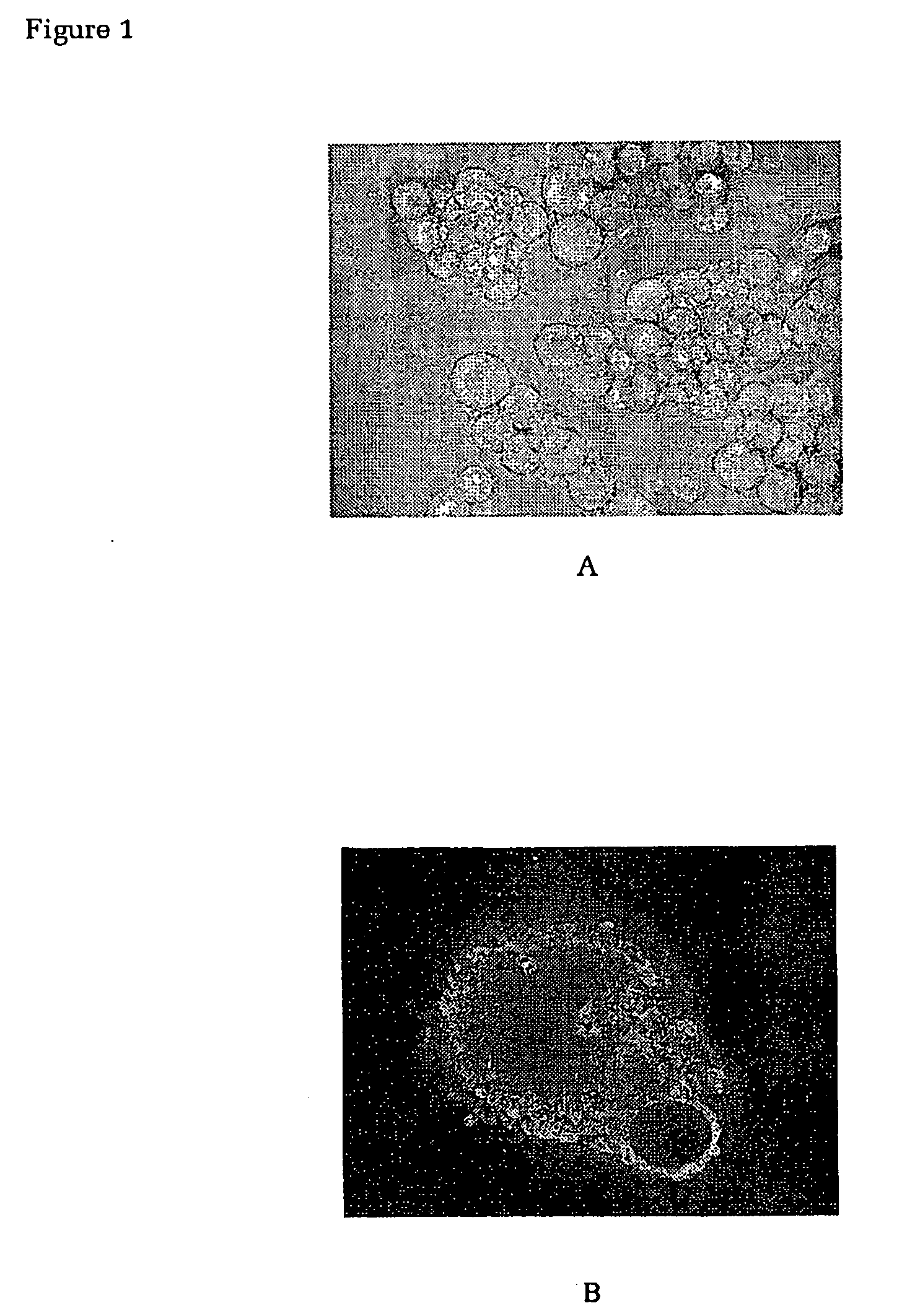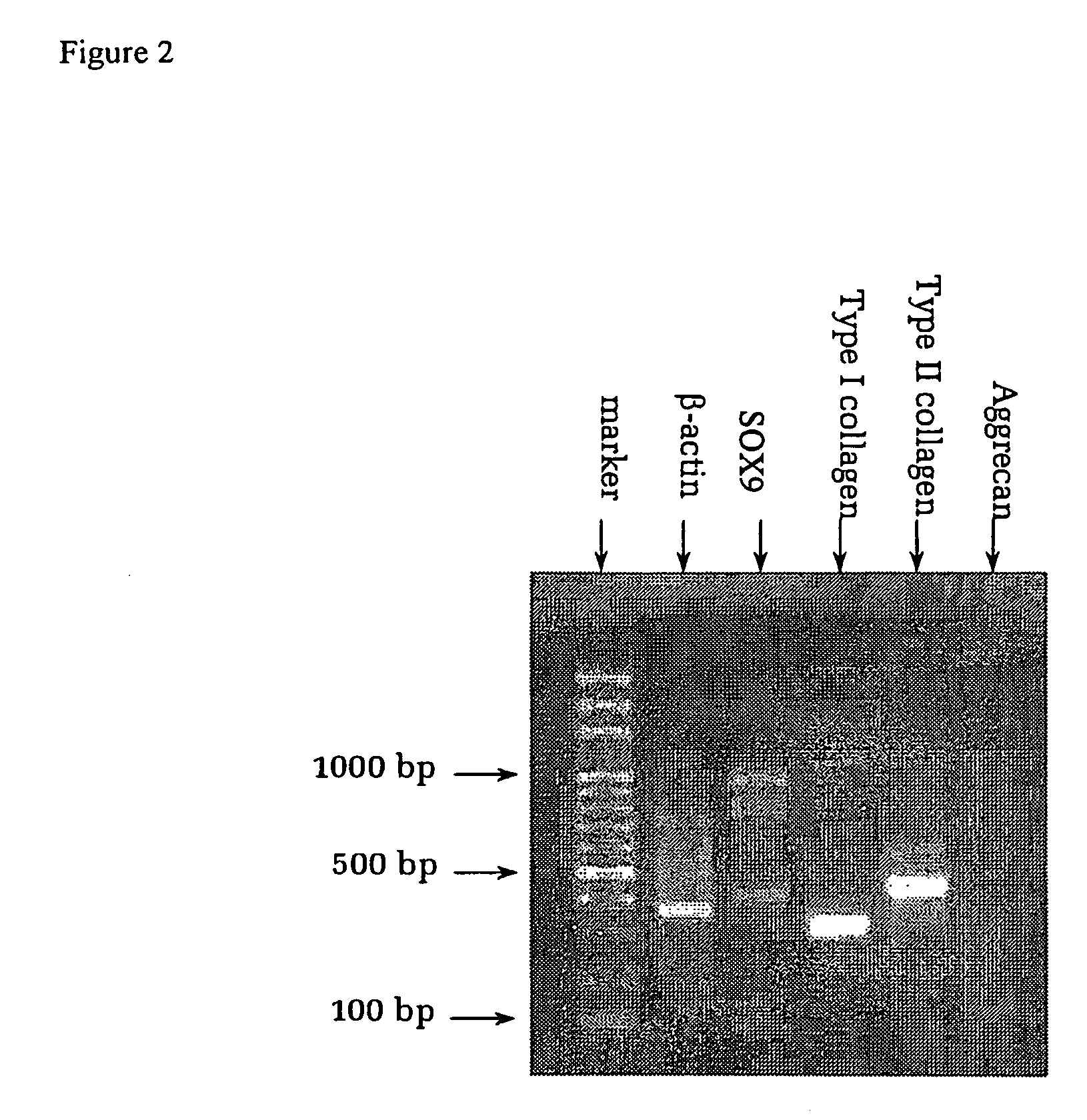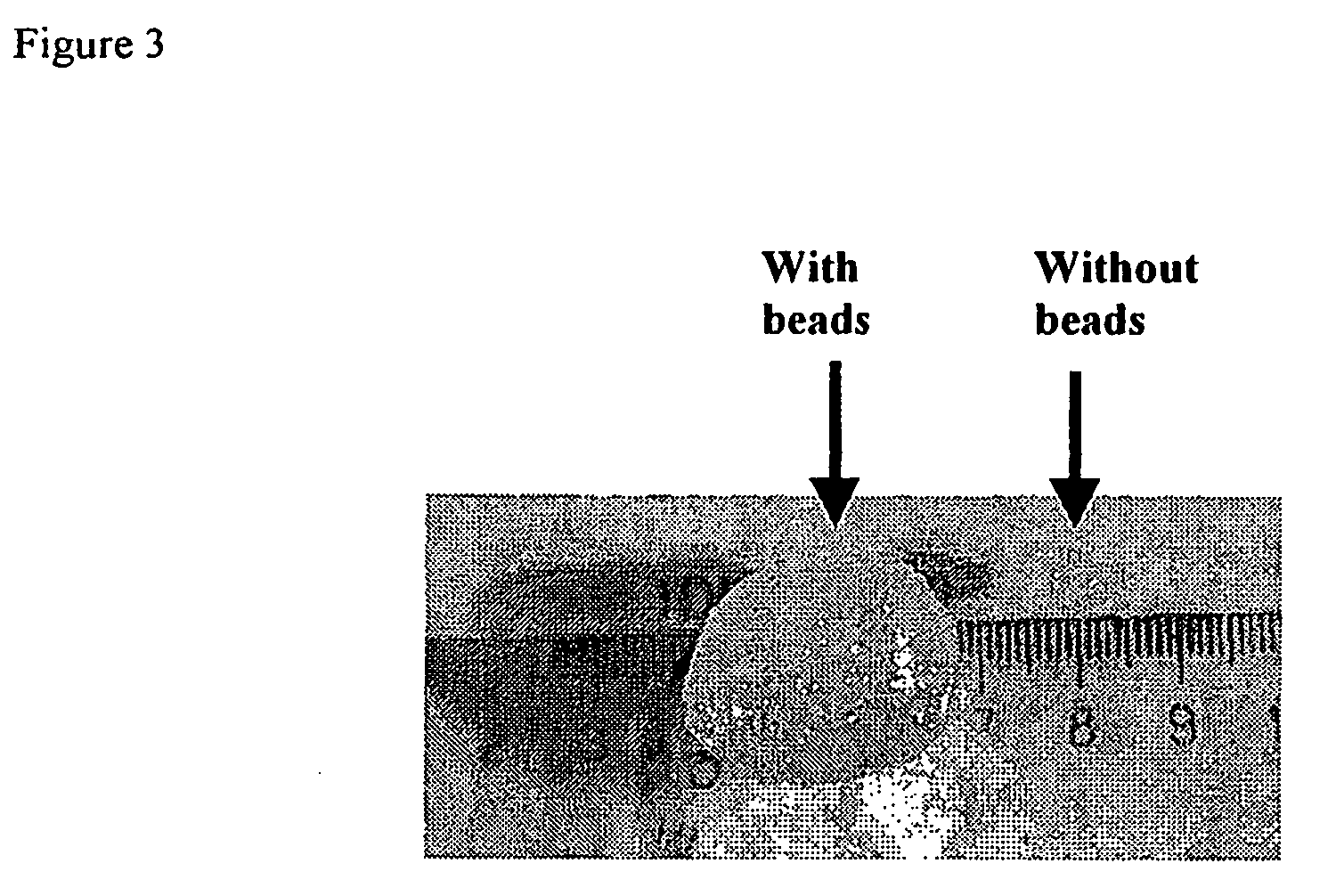Methods and devices for tissue repair
a tissue and tissue technology, applied in the field of tissue repair methods and devices, can solve the problems of increasing the difficulty of tissue repair,
- Summary
- Abstract
- Description
- Claims
- Application Information
AI Technical Summary
Benefits of technology
Problems solved by technology
Method used
Image
Examples
example 2
Fibroblast Isolation
[0051]Fresh skin, after hair removal and washing in 70% ethanol, is collected in DMEM / 10% FBS or autologous serum containing 100 μg / ml penicillin and streptomycin. The tissue is placed in a sterile petri dish containing 3-4 ml of DMEM and dissected into 1 mm3 pieces using a sharp sterile scalpel. The tissue pieces are left in culture in DMEM / 10% FBS or autologous serum containing 100 μg / ml penicillin and streptomycin to allow migration of fibroblasts onto the tissue culture plastic. After cells are visible on the tissue culture plastic, the tissue is removed and the cells sub-cultured. Cell numbers and viability are assessed using a trypan blue count on a small known aliquot.
example 3
Osteoblast Isolation
[0052]Fresh cortical bone is collected in DMEM / 10% FBS or autologous serum containing 100 μg / ml penicillin and streptomycin. The bone is placed in a sterile petri dish containing 3-4 ml of DMEM. The bone piece(s) are left in culture in DMEM / 10% FBS or autologous serum containing 100 μg / ml penicillin and streptomycin to allow migration of osteoblasts onto the tissue culture plastic. After cells are visible on the tissue culture plastic, the bone is removed and the cells sub-cultured. Cell numbers and viability are assessed using a trypan blue count on a small known aliquot.
example 4
Stem Cell Isolation
[0053]Adult mesenchymal stem cells (MSC) are harvested from bone marrow aspirates. The marrow is washed twice with sterile PBS then resuspended in DMEM / 10% FBS or autologous serum containing 100 μg / ml penicillin and streptomycin. Marrow cells are then layered onto a Percoll cushion (1.073 g / ml density) and cells collected after centrifugation for 30 min. at 250 g and transferred to tissue culture flasks. Various additives including dexamethasone, growth factors and cytokines are used to select and propagate specific cell lineages.
PUM
| Property | Measurement | Unit |
|---|---|---|
| diameter | aaaaa | aaaaa |
| size | aaaaa | aaaaa |
| size | aaaaa | aaaaa |
Abstract
Description
Claims
Application Information
 Login to View More
Login to View More - R&D
- Intellectual Property
- Life Sciences
- Materials
- Tech Scout
- Unparalleled Data Quality
- Higher Quality Content
- 60% Fewer Hallucinations
Browse by: Latest US Patents, China's latest patents, Technical Efficacy Thesaurus, Application Domain, Technology Topic, Popular Technical Reports.
© 2025 PatSnap. All rights reserved.Legal|Privacy policy|Modern Slavery Act Transparency Statement|Sitemap|About US| Contact US: help@patsnap.com



